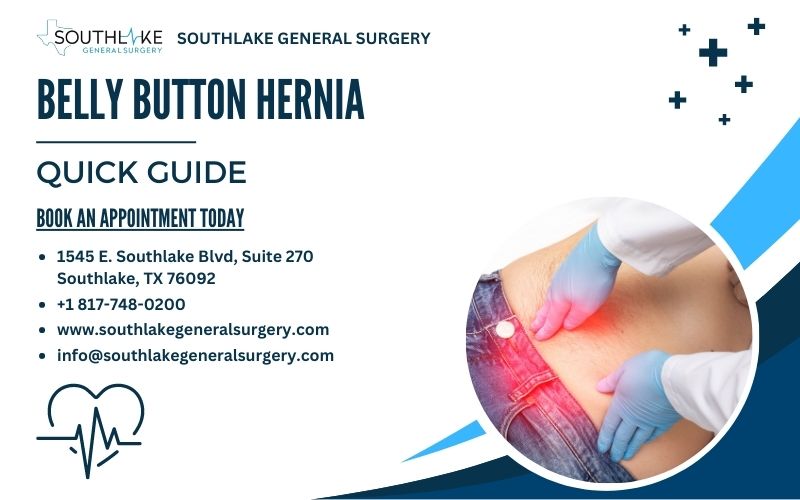An “umbilical hernia”, also referred to as a “belly button hernia”, is a common health condition that has attracted significant attention. Both adults and infants may experience discomfort and worry due to this condition, which is frequently visually identifiable by a protrusion near the navel.
In the era of digital advancements, there has been a significant increase in self-diagnosis. Dr. Valeria Simone MD, an experienced board-certified general surgeon at Southlake General Surgery, Texas, USA, recognizes the significance of providing accurate and easily comprehensible information on these subjects.
This guide, carefully curated with her expertise, aims to provide a comprehensive understanding of belly button hernias. It offers valuable insights into the causes, symptoms, and treatments associated with this condition.
Dr. Simone, with her vast expertise, offers guidance to concerned parents, individuals noticing unusual abdominal shifts, and health enthusiasts. We have specifically tailored it to meet your unique needs.
What is a Belly Button Hernia?
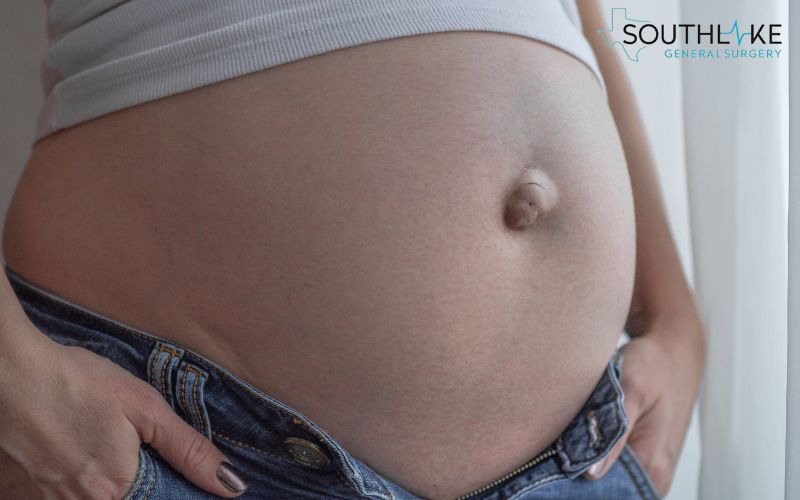
An umbilical hernia, commonly referred to as a “belly button hernia,” is a prevalent medical condition characterized by the protrusion of internal tissues, such as a portion of the intestine or adipose tissue, through a weakened area in the abdominal wall adjacent to the navel.
The condition causes a noticeable bulge, which makes it one of the hernias that can be easily identified visually. Although hernias are often linked to strenuous activity or heavy lifting, it’s important to note that belly button hernias can occur for a variety of reasons.
Dr. Valeria Simone, MD, explains that these reasons can range from congenital factors in newborns to specific triggers that develop in adults.
In the evolving digital health landscape, it is crucial to have a thorough understanding of the specifics associated with various hernia types and their implications. This knowledge becomes particularly important when distinguishing between different types of hernias.
Causes of Belly Button Hernia
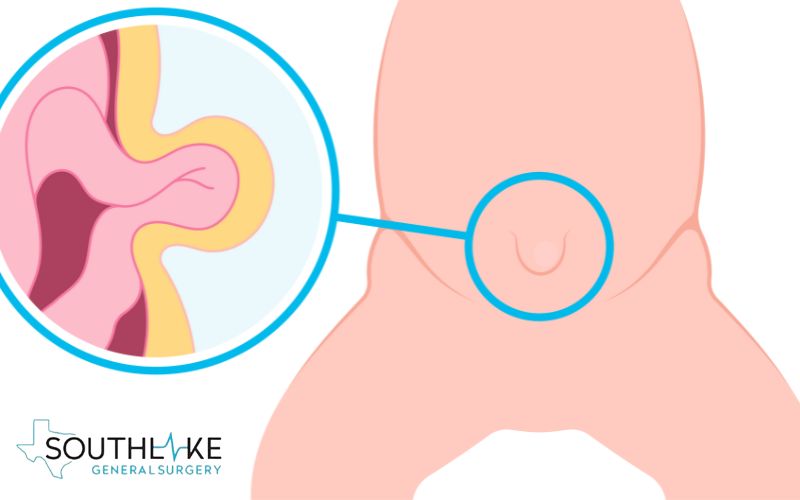
- Infantile Factors: One of the main causes of umbilical hernias in infants is the failure of the umbilical ring to completely close after birth. This creates a vulnerability where tissues can protrude.
- Adult-Onset Triggers: The development of an umbilical hernia in adults is commonly associated with an increase in intra-abdominal pressure. This pressure may arise from:
- Obesity: Being overweight places extra strain on the abdominal muscles.
- Multiple Pregnancies: Hernia risk increases with each additional pregnancy because each pregnancy puts extra strain on the abdominal muscles.
- Chronic Coughing or Constipation: The constant straining associated with persistent coughing or constipation might increase abdominal pressure over time.
- Fluid in the Abdominal Cavity: Hernia risk is elevated when there is a buildup of fluid in the abdominal cavity, which can occur in conditions like cirrhosis.
- Previous Surgeries: Surgical treatments, particularly those in the abdominal region, have the potential to compromise the integrity of the abdominal wall, thereby establishing vulnerable areas where hernias may potentially manifest.
- Genetic Predisposition: Hernias are not common, but certain people may have a hereditary tendency that makes their abdominal wall weaker.
Identifying the Symptoms of a Belly Button Hernia
- Visible Protrusion: An obvious protrusion at the belly button is the most evident symptom of an umbilical hernia. When you laugh, weep, cough, or stretch, this bump may become more noticeable.
- Localized Discomfort: Some people, particularly while engaging in activities that increase abdominal pressure, may feel mild to moderate pain or a sensation of pressure at the hernia site.
- Skin Changes: There may be a problem if the skin over the hernia becomes red or discolored. A doctor should be consulted right away in the event of such a change.
- Nausea and Vomiting: In more serious cases, when a section of the intestine gets stuck in the hernia, the patient may experience nausea, vomiting, and intense pain, indicating the need for immediate medical attention.
- Fluctuating Size: The hernia’s size may alter over time, shrinking when lying down and growing larger when exercising.
- Tenderness to Touch: The belly button region may become more sensitive to pressure than usual.
Diagnosis and Medical Procedures for Belly Button (Umbilical) Hernia
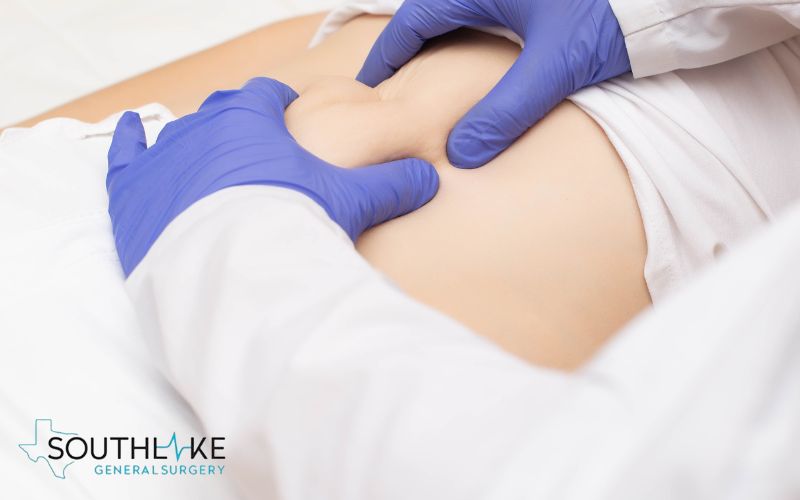
Effective treatment for a belly button hernia relies on a correct diagnosis. An umbilical hernia can now be diagnosed with greater accuracy and with the patient’s needs in mind, thanks to technological advances in the medical field.
Let’s explore the various procedures used by medical professionals, from traditional examinations to state-of-the-art imaging, to reliably diagnose and treat this common disorder.
- Physical Examination: A physical examination by a doctor or other medical expert is the first step in diagnosis. The doctor will feel around the belly button and other areas of the abdomen for any anomalies or protrusions.
- Medical History Review: Understanding the patient’s medical history might help determine whether the patient is at risk for developing an umbilical hernia.
- Ultrasound Imaging: This non-invasive technique employs sound waves to create images of the abdominal region, providing doctors with a clear view of the hernia and its contents.
- CT Scan: This advanced imaging method provides cross-sectional images of the abdominal cavity, displaying the hernia’s size, location, and any related issues.
- MRI: If there is any doubt about the diagnosis or if there are critical structures within the hernia contents, magnetic resonance imaging (MRI) can be quite helpful because of the high-resolution images it generates.
- Herniography: Medical professionals perform an infusion of contrast dye into the abdominal cavity. Subsequently, they utilize X-ray imaging to precisely identify and measure the location and size of the hernia.
Treatment Options for the Belly Button Hernia
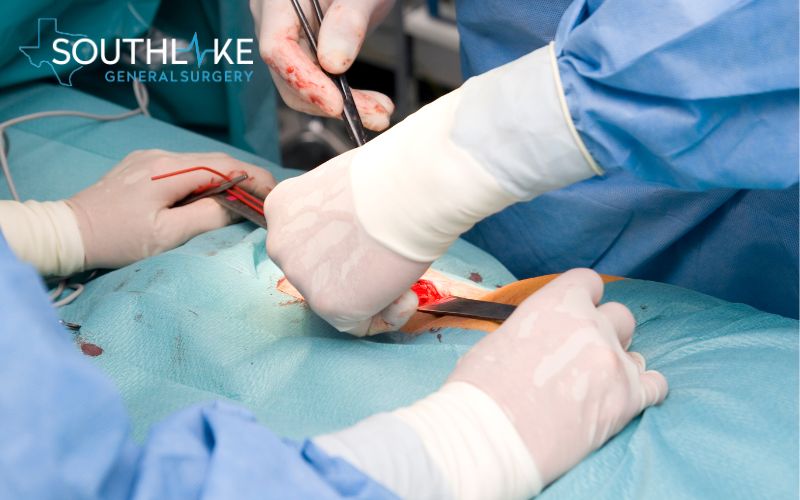
Treatment for belly button hernia involves a combination of contemporary medical interventions and individualized care. The treatment methodologies for umbilical hernias are evolving along with the changes in the medical landscape.
Discover the most up-to-date, scientifically supported strategies that are designed to meet the needs of both infants and adults, promoting optimal recovery and long-term overall health.
- Observation: As an observation, not all umbilical hernias require emergency surgery. Especially with newborns, a wait-and-see strategy is taken because many hernias heal on their own by the time a child is 3 or 4 years old.
- Hernia Support Devices: Hernia belts or trusses can provide temporary relief for adults who are waiting for surgery. These devices help hold the hernia in place and reduce discomfort.
- Open Hernia Repair: The hernia is repaired conventionally by making one large incision close to the affected area, repositioning the protruding tissue, and closing the wound with stitches or mesh.
- Laparoscopic Hernia Repair: This technique is an option for those who prefer a less invasive approach, as it only requires tiny incisions and specialist equipment to repair the hernia. In many cases, this facilitates a speedier recovery with less discomfort after surgery.
- Post-Surgery Care: Patients who have had a hernia repaired are given instructions on how to care for themselves after the procedure. Taking care of wounds and managing discomfort are also part of this.
- Lifestyle Modifications: To avoid another hernia repair after therapy, it’s important to make some adjustments to your daily routine. Exercises aimed at strengthening the core, practicing proper lifting techniques, and maintaining a healthy weight are all part of this.
Prevention and Lifestyle Changes for Belly Button Hernia
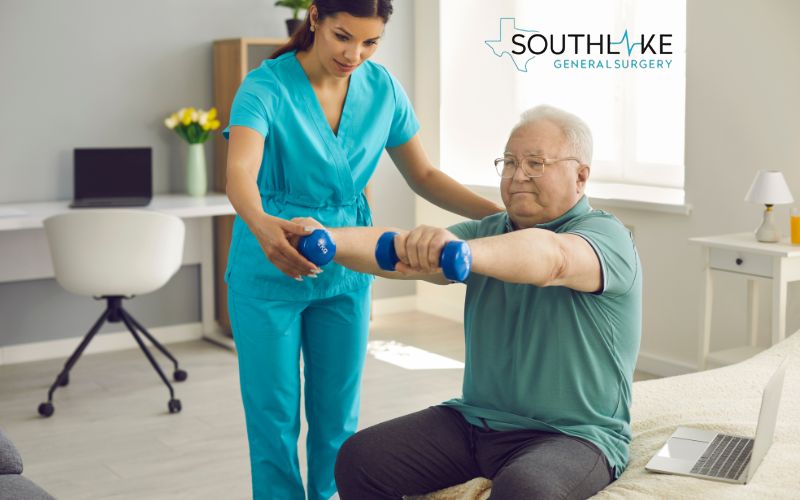
The key to preventing umbilical hernias is to empower oneself with proactive health measures. Explore the most up-to-date information on adopting a holistic lifestyle and implementing preventive strategies.
This collection is specifically designed to enhance abdominal health and reduce the chances of developing hernias in our modern, fast-paced society.
- Weight Management: One way to significantly reduce the risk of developing an umbilical hernia is by maintaining a healthy weight, which helps lower abdominal pressure. To effectively manage weight, it is important to adopt a well-balanced diet and establish a consistent exercise routine.
- Safe Lifting Techniques: Proper lifting methods are crucial, whether you’re at the gym or engaging in daily activities. To lift weights properly, remember to bend your knees, maintain a straight back, and avoid lifting any weights that may strain your abdominal muscles.
- Core Strengthening: Participating in exercises that strengthen the core muscles, such as pilates, yoga, and specific abdominal workouts, can improve the abdominal wall’s ability to resist hernias.
- Avoid Straining: Engaging in activities that involve excessive straining, such as heavy lifting or persistent coughing, can worsen weak areas in the abdominal wall. It is advisable to consult a medical professional if you are experiencing persistent coughing or constipation.
- Post-Surgical Care: If you have undergone abdominal surgery, it is important to follow the post-operative guidelines. To prevent the development of a hernia at the surgical site, it is important to refrain from engaging in strenuous activities until you are completely recovered.
- Pregnancy Care: Pregnant women can lessen their risk of hernias by getting frequent checkups and listening to their doctor’s recommendations about how to handle the extra pressure on their bellies.
Conclusion: Navigating the Landscape of Belly Button Hernias
The process of learning about umbilical hernias is informative and essential in the ever-expanding field of digital health literacy.
In this final section, we will summarize the most important takeaways and professional suggestions from this text, allowing you to make educated decisions and achieve the best possible health outcomes when dealing with a belly button hernia.
- Awareness is Key: Umbilical hernias are complex diseases that require a thorough comprehension of the broad world of digital health information. People who are well-informed are better able to spot symptoms early and get help before they worsen.
- Collaborative Approach: By combining personal vigilance with seasoned medical advice, one can achieve optimal health outcomes. It is always advisable to seek guidance from healthcare professionals when experiencing symptoms that may indicate a hernia.
- Lifestyle Matters: By adopting preventive measures such as weight management and safe lifting techniques, people can greatly decrease their chances of developing or worsening a hernia.
- Stay Updated: Medical research is constantly advancing, leading to the discovery of new knowledge and treatment options. Keeping up with the latest research and discoveries can provide patients with the knowledge they need to make well-informed choices regarding their health.
- Community Support: Participating in activities such as sharing experiences, joining support groups, and engaging in community discussions can provide emotional support and practical insights for individuals who are managing umbilical hernias.
Appointment

For more information on “Belly Button Hernia” also known as Umbilical Hernia or to book an appointment with Dr. Valeria Simone MD, please contact our healthcare expert today at +1 (817) 748-0200.
Follow us on Facebook and YouTube.
Frequently Asked Questions (FAQs) about Belly Button Hernia.
Q: What exactly is an umbilical hernia?
When organs or tissue, like a section of the intestine, push through an opening in the abdominal wall at the belly button, this is known as an umbilical hernia.
Q: Can adults also develop belly button hernias, or is it primarily a condition found in children?
Umbilical hernias are more prevalent in infants, but adults can have them too if they’re overweight, have had several pregnancies, or have had abdominal surgery.
Q: Are there any complications that can arise from not treating umbilical hernias?
Yes, in some cases, untreated umbilical hernias can also lead to discomfort, pain, and an increased risk of infection. If you think you may have an umbilical hernia, you should see a doctor immediately.
Q: How is a hernia diagnosed?
A physical examination is the first step in making a diagnosis. Imaging tests like ultrasounds and CT scans may be suggested if doubts persist.
Q: Is surgery the only treatment option available?
Not necessarily. Babies frequently have their little hernias heal on their own. If an adult’s hernia isn’t causing any distress or other difficulties, a wait-and-see strategy may be taken.
Q: How long does it take for a patient to feel back to normal after surgery?
Depending on the treatment and the patient, recovery times can be different. In most cases, patients only need two to four weeks of rest before getting back to work.
Q: Is there anything I can do to make sure my hernia doesn’t come back?
Yes, maintaining a healthy weight, using proper lifting techniques, and working on core strength can all greatly lessen the likelihood of a hernia recurrence.
Q: Is it okay to work out if I have an umbilical hernia?
Seeking advice from a medical expert is mandatory. Some workouts may help, while others could make the hernia worse.
Q: Will a truss or hernia belt help my hernia?
Hernias can’t be cured with one of these devices, but they can help. In many cases, Hernia Surgery is the only option for a long-term fix.
Q: Can a hernia be avoided by changing my diet in any way?
It’s good to eat a balanced diet that helps maintain a healthy weight. The risk of straining, which can lead to a hernia, can be mitigated by eating foods that prevent constipation.
Medically Reviewed By: Dr. Valeria Simone MD
Board-certified General Surgeon at Southlake General Surgery, Texas, USA.

